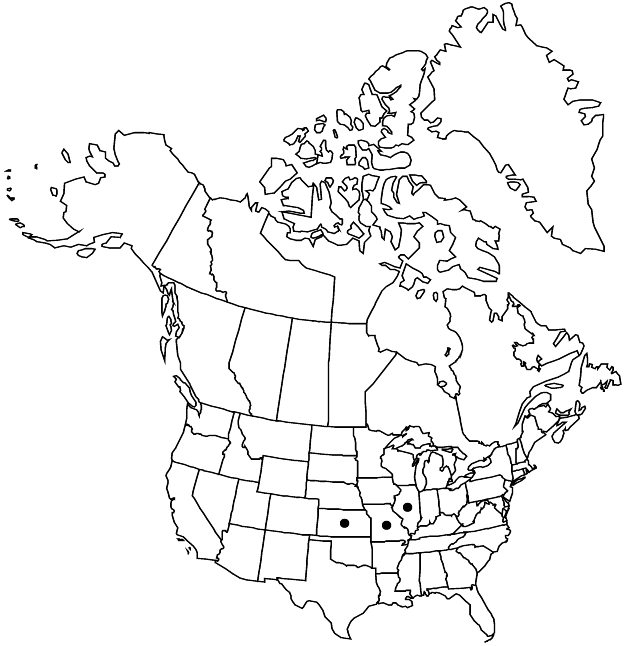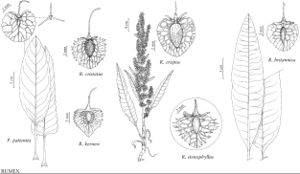Rumex cristatus
Cat. Pl. Hort. Monsp., 139. 1813.
Plants perennial, glabrous or indistinctly papillose exclusively on veins of leaf-blades abaxially, with fusiform, vertical rootstock. Stems erect, branched from above middle or in distal 2/3, 70–150 (–200) cm. Leaves: ocrea deciduous or partially persistent at maturity; blade broadly lanceolate to oblong-lanceolate, normally 15–25 (–35) × 5–7 (–12) cm, base truncate, rounded, or slightly cordate, margins entire, undulate or weakly crisped, occasionally flat, apex acute or acuminate. Inflorescences terminal, occupying distal 1/2–2/3 of stem, normally dense or interrupted near base, broadly paniculate (branches of inflorescence mostly with 2d-order branches), branches usually straight or arcuate, rarely indistinctly flexuous. Pedicels articulated near middle, filiform, 6–14 mm, articulation distinctly swollen. Flowers 15–20 in whorls; inner tepals orbiculate, 6–8 (–9) × 6–7.5 (–8) mm, base usually distinctly cordate, margins entire or subentire near apex, distinctly dentate in basal 1/2, apex acute or subacute, teeth 0.5–1 mm; tubercles normally 3, rarely 1, distinctly unequal. Achenes dark-brown or brown, 2.8–3.5 × 2–2.5 mm. 2n = 80.
Phenology: Flowering late spring–early summer.
Habitat: Waste places, roadsides, along railroads, other ruderal habitats
Elevation: 100-300 m
Distribution

Introduced; Ill., Kans., Mo., se Europe (Balkans), se Europe (Greece), naturalized elsewhere in s Europe
Discussion
Rumex cristatus is known from Missouri, Illinois, and Kansas; it may occur also in adjacent states (P. Shildneck et al. 1981). Although separable by the characters given in the key, R. cristatus sometimes is misidentified as R. patientia. The morphological distinctions between these related species are obscured by possible hybridization. Such hybrids are known as R. ×xenogenus Rechinger f. (G. D. Kitchener 2002); they may be expected in North America in areas where the parental species grow together.
Selected References
None.
Lower Taxa
"/2" is not declared as a valid unit of measurement for this property.
